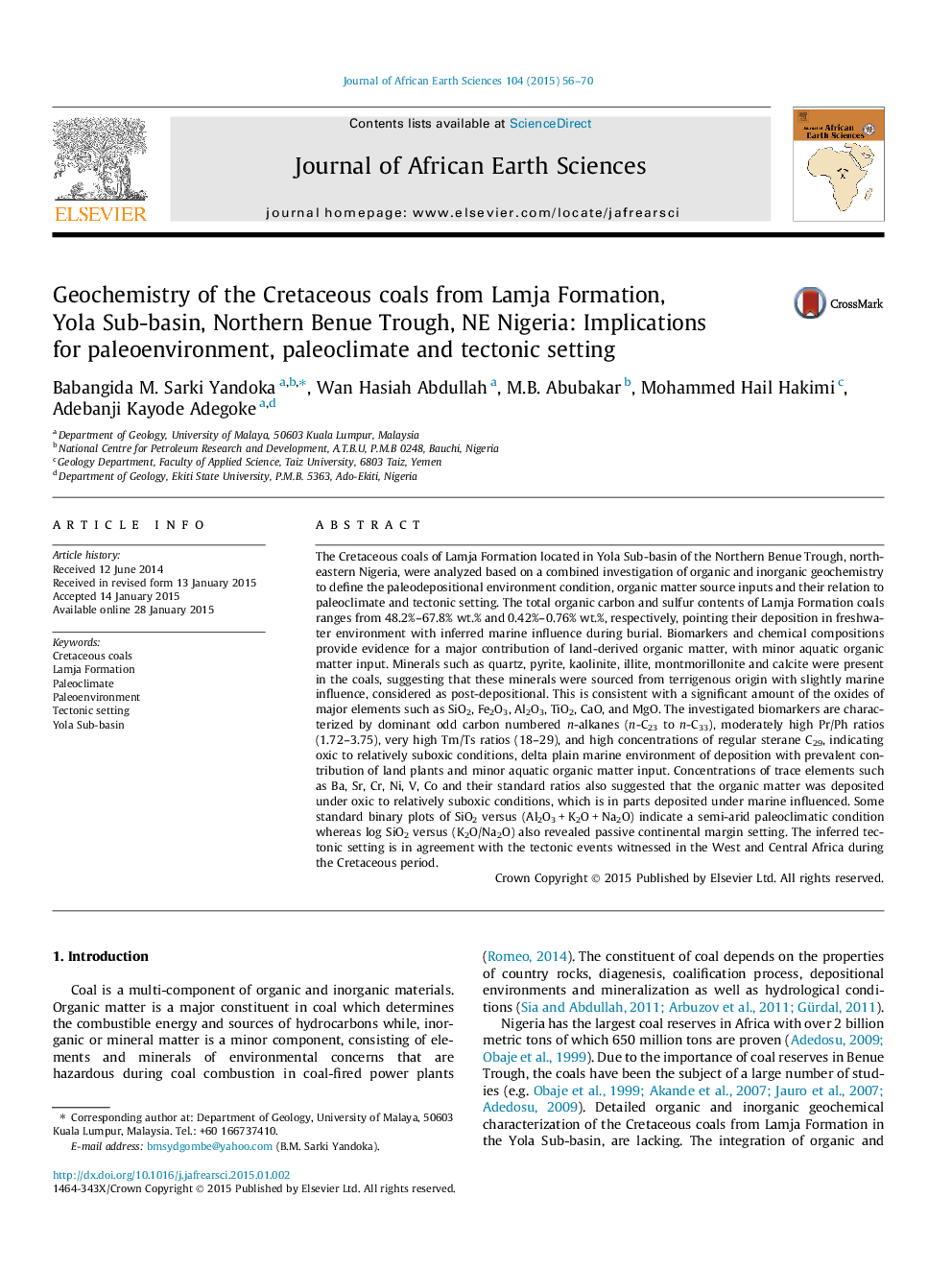| کد مقاله | کد نشریه | سال انتشار | مقاله انگلیسی | نسخه تمام متن |
|---|---|---|---|---|
| 4728541 | 1640203 | 2015 | 15 صفحه PDF | دانلود رایگان |
• The Lamja Formation coals were deposited in freshwater with inferred marine influence during burial.
• The coals contain major inputs of terrigenous land-derived organic matter with minor aquatic organic matter.
• Inorganic geochemical investigations revealed a semi-arid paleoclimatic conditions.
• Passive continental margin tectonic setting for the provenance of the Lamja Formation coals.
The Cretaceous coals of Lamja Formation located in Yola Sub-basin of the Northern Benue Trough, northeastern Nigeria, were analyzed based on a combined investigation of organic and inorganic geochemistry to define the paleodepositional environment condition, organic matter source inputs and their relation to paleoclimate and tectonic setting. The total organic carbon and sulfur contents of Lamja Formation coals ranges from 48.2%–67.8% wt.% and 0.42%–0.76% wt.%, respectively, pointing their deposition in freshwater environment with inferred marine influence during burial. Biomarkers and chemical compositions provide evidence for a major contribution of land-derived organic matter, with minor aquatic organic matter input. Minerals such as quartz, pyrite, kaolinite, illite, montmorillonite and calcite were present in the coals, suggesting that these minerals were sourced from terrigenous origin with slightly marine influence, considered as post-depositional. This is consistent with a significant amount of the oxides of major elements such as SiO2, Fe2O3, Al2O3, TiO2, CaO, and MgO. The investigated biomarkers are characterized by dominant odd carbon numbered n-alkanes (n-C23 to n-C33), moderately high Pr/Ph ratios (1.72–3.75), very high Tm/Ts ratios (18–29), and high concentrations of regular sterane C29, indicating oxic to relatively suboxic conditions, delta plain marine environment of deposition with prevalent contribution of land plants and minor aquatic organic matter input. Concentrations of trace elements such as Ba, Sr, Cr, Ni, V, Co and their standard ratios also suggested that the organic matter was deposited under oxic to relatively suboxic conditions, which is in parts deposited under marine influenced. Some standard binary plots of SiO2 versus (Al2O3 + K2O + Na2O) indicate a semi-arid paleoclimatic condition whereas log SiO2 versus (K2O/Na2O) also revealed passive continental margin setting. The inferred tectonic setting is in agreement with the tectonic events witnessed in the West and Central Africa during the Cretaceous period.
Journal: Journal of African Earth Sciences - Volume 104, April 2015, Pages 56–70
